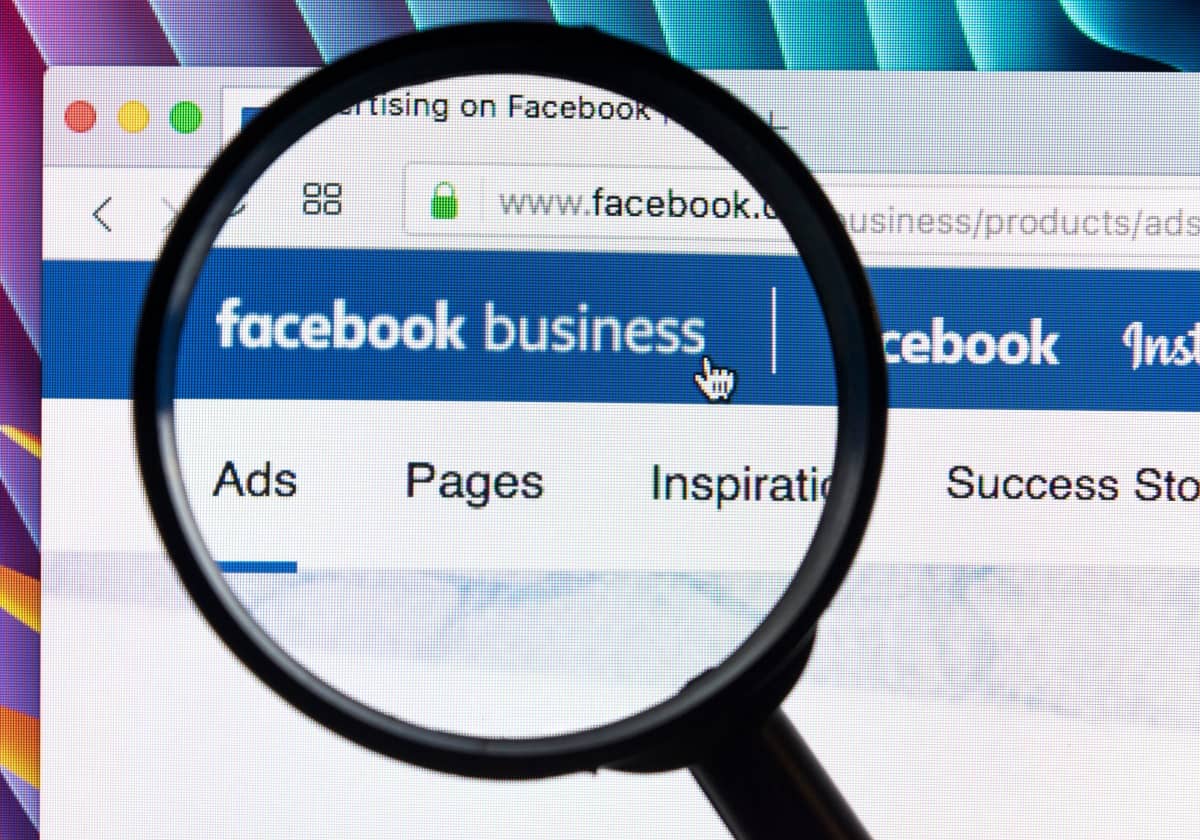Crush Your Facebook Marketing in 2024 (7+ Strategies & Tips!)
Facebook marketing is no longer an option for marketers; it's a necessity.
Facebook continues to dominate as the top social media platform. The reach potential is massive at nearly 3 billion MAUs.
But with 93% of social media marketers worldwide using the platform, so is the competition.
You'll want to know everything about how to leverage this platform to stay ahead of the pack. Read on for a comprehensive guide to Facebook marketing, plus strategies and tips.
What Is Facebook Marketing?
Exactly as it sounds, Facebook marketing is promoting your brand on Facebook to its users.
A Facebook page conveys your brand's identity to the user base. It allows you to communicate directly with your target audience. Finally, it provides a place to share your web content and promote your offerings.
Nearly every Facebook function has digital marketing possibilities:
- Status updates
- Photos
- Videos
- Link-sharing
- Stories
- Reels
- Facebook Live
- Messenger
- Ads
- Contests
- Groups
- Events
- Shop
- Watch Parties
Facebook practically oozes opportunities.
Set up a free business page to get started, which opens up access to all Facebook marketing tools.
Why Facebook Marketing?

People use social media now more than ever to engage in eCommerce:
- Discovering new products and services
- Researching brands
- Giving and seeking recommendations
- Connecting with sellers
- Making purchases
The U.S. alone has more than 90 million social buyers.
That said, Facebook, in particular, is THE place to be for virtually any business or marketer. The numbers don't lie:
- The most-used social media platform in the world, 3rd favorite to use after Facebook-owned WhatsApp and Instagram
- After Google and YouTube, the 3rd most visited website in the world
- Considered by 62% of marketers the most effective platform for social media marketing
- Used by 66% of small business owners for their digital marketing efforts in 2021
- The top social commerce platform in the U.S., boasting 56.1 million buyers
- Used by 46% of people to find new products in 2019
- Drives 74% of all website referrals from social media worldwide
The massive reach potential? The variety of ways to share info and connect with users? The track record of success?
Yes, please.
Benefits of Facebook Marketing
Facebook helped turn grumpy-looking cats and pom-dogs into international sensations. Imagine what a Facebook presence can do for your brand:

- Brand Awareness: Showcase your brand to scores of active users across the globe.
- Audience Targeting: Analyze and advertise to a specifically targeted audience group.
- Increased Traffic: Direct traffic from your Facebook page to your external sites — your blog, podcast, website, or microsite.
- Cross-promotion: Post and share content across all your social media platforms while keeping your brand voice consistent.
- Direct Communication: Connect with users consistently, building rapport and fostering brand loyalty.
- Low Advertising Cost: Leverage free tools and tactics alongside paid advertising.
Lead generation is another benefit, as it further increases the chances of users:
- liking and following your Facebook page
- joining your Facebook group
- subscribing to your email list, podcast, or YouTube channel
- registering for your service, class, event, or membership program
Sufficiently convinced that Facebook marketing is awesome? Let's look more closely at how Facebook can be used in marketing.
Types of Facebook Marketing Ads
Facebook offers many different format types for creating compelling visual ads.
Video ads
Video advertising showcases your product or service in action. It breathes life and credibility into testimonials, and it animates your brand's story.
Examples of impressive video ad types include:
Most Facebook ad formats can incorporate video, including some on this list.
Image ads
A picture is worth a thousand words.
Image ads are a concise and simple yet powerful way for your brand to make a statement that draws in your audience.
A well-crafted image ad can stop a scroller dead in their tracks and entice them to respond to your CTA.
Carousel ads
Carousel ads use up to 10 photos or videos, each with its own CTA, in one swipeable experience.
These ads work well for highlighting:
- different aspects of one product or service
- multiple products in a collection
They also help you tell a story or deliver a message in sequence.
Collection ads
Collection ads showcase your whole catalog of offerings.
They feature:
- one primary image or video in center stage
- three additional related images in a grid below
- your digitized catalog, powered by Instant Experiences
- a CTA button redirecting to your website or app
One ad seamlessly guides the potential customer through much of your sales funnel.
Slideshow ads
Slideshow ads are another simple Facebook ad format. It works best for:
- highlighting product or service features
- breaking down long messaging
- listing out basic how-to instructions
Creation is pretty straightforward. Curate photos or stock images. Animate with editing tools. Set to music. Or start out using an existing video.
Lead generation ads
Use lead ads to collect Facebook user info without the user ever having to leave the ad itself.
Facebook stores each user's contact info. When someone clicks the CTA button in a lead ad, a form pops up that's prefilled with their info.
While still within the ad, they can also:
- Click-to-call
- Schedule appointments
- Redeem offers
You can also customize questions in the form to collect more info about them, such as preferences.
Facebook Marketing Strategies

The following list provides strategies to institute or incorporate into your existing plan.
1. Define your Facebook marketing goals
Facebook marketing goals fall under three main categories:
- Awareness goals: brand awareness or reach
- Consideration goals: traffic, engagement, views, messages, clickthroughs
- Conversion goals: conversions, sales, or traffic
These goals are also listed in Facebook Ads Manager when you start building a campaign. They help direct your campaigns by ensuring you create the best type of ads for your objectives.
Across the board, your main priority should always be to serve your audience.
Any content you post should provide them with some benefit. Any ads you run should promote offers that present solutions to their problems.
2. Pinpoint your target audience

Facebook's 2.91 billion global MAU base is an extremely large sea to cast your net in.
For that reason, consider narrowing your primary focus to a target group. Find the people already seeking out your brand and the people most prone to seeking out your brand.
Facebook insights tools gather demographic info and behavior data on page visitors. The segmentation is very specific, allowing you to see:
- Age
- Gender
- Location
- Language
- Interests
- Occupation
- Education level
- Relationship status
- Devices used to log on
- How, when, and how often they log on
You can also integrate third-party analytics tools with Facebook tools for deeper insights.
3. Determine your posting schedule
Establishing a posting schedule saves loads of time and eases lots of stress. It enables you to create a content calendar and develop a schedule for content and ad creation.
Some post planning tools even allow you to automate posts. This front-end work ensures that you have fresh posts throughout the year. You can also determine when to recycle evergreen content and add those to the schedule.
Facebook analytics tools provide insights on the best posting days, times, and frequency. You'll also discover your most popular posts so you can consider reusing them in the future.
4. Implement a content marketing strategy
You've defined your goals and your target audience. Next comes achieving those goals and reaching that audience. That's where your content marketing strategy comes in.
Consider the following factors:

- Type of content — Choose the best content types for your audience, offerings, and brand image.
- Content mix — Determine the right mix of content types that complement each other and drive the objective.
- Visuals — Choose high-quality visuals that pair well with the chosen content type.
- Pinned Posts — Pin important posts to the top of the News Feed to avoid getting lost in the shuffle.
Once that's sorted out, you can start planning your posts.
5. Consistently engage with your target audience
Your Facebook business page is not only your digital marketing tool and brand presence on social media. It's also a place to build community. It's where you get to know your target audience and build rapport.
Use polls, votes, questions, Facebook Live events, and Q&As to start conversations. The main goal is to spend time with your audience:
- Identify pain points
- Share experiences and interests
- Address reviews and sentiments
- Answer questions and messages
- Gather insights on popular and unpopular content
Consumers value a brand that's present, accessible, and responsive. Consistent engagement builds trust and a sense of reliability. It also helps them know the brand better.
6. Design a Facebook Ads strategy
Your Facebook advertising strategy depends largely upon your campaign goals. They determine which ad formats will be most effective for you.
They also help determine prime ad location. Even better, Facebook can place your ads automatically. Ads can appear in various places:
- In-stream video
- News Feed
- Stories
- Facebook Messenger
- Embedded on your website
- Audience Network
When creating your ads, you'll pin down your messaging as well as what visuals to use and CTAs to include. You'll also have the option to schedule your ads. Specify a date range or specific dates, days, and times.
7. Utilize Facebook's other tools

A Facebook business account grants you access to a large variety of tools. Facebook Business Suite is the main hub for many of these tools:
- Business Suite Insights (formerly Audience Insights)
- Page Insights
- Insights
- Meta Blueprint
- Events Manager
- Meta Pixel
- Conversions API
- Facebook Ads Manager
Additional tools outside of Facebook Business Suite that still prove useful include:
Even the more basic tools can help drive traffic, generate leads, and build brand awareness:
- Groups
- Pages
- Fundraisers
- Appointments
- Events
Explore all the options at your disposal and use any that will best serve your purposes.
8. Champion your employees to be brand advocates
People trust recommendations and opinions received from people they know. And the Facebook algorithm prioritizes posts from these people.
The News Feed populates with posts from friends, groups, and brands a user engages with most. The algorithm banishes everything else to the abyss.
Your employees (who hopefully like your brand) each have a sphere of influence separate from work. A circle of contacts that they've already established a relationship with.
Enlist their help in bridging that gap between your brand and their friends. And their friends' friends. And those friends' friends.
9. Monitor and analyze the metrics
You've got your content. You've got your ads. You've got your posting schedule and your advocacy group.
But is any of it working?

Monitoring and social media analytics tools will let you know. When you implement a Facebook marketing campaign, keep a close eye on such metrics as:
- Likes
- Follows
- Reach
- Reactions
- Pageviews
- Engagement
- Demographics
- Clickthrough rate
- Cost per conversion
Get specific and analyze each component of your Facebook marketing strategy:
- Post performance
- Page performance
- Hashtags
- @mentions
- Ads
- Employee advocacy
- Influencer marketing
- Affiliate campaigns
Use Facebook insights tools to find what's working and what's not.
Tips & Tricks for Successful Facebook Marketing
Finally, here are some tips to ensure Facebook marketing success.
1. Timing is key
Your content may be on-point, and your ads may be stunning. But there's no point to any of it if your target audience never lays eyes on them.
Determine when your tribe's most active. Then schedule your content and your ads accordingly. This increases the odds they'll see your posts and respond.
So the Facebook algorithm won't bury them in the shuffle. Because you're always posting on Wednesday when the party's always on Sunday.
2. Cross-channel promotion
It's great when different digital marketing channels all play nice together. Luckily, Facebook gets along with EVERYONE.
You can share Facebook posts and ads to other platforms in the "Family of Apps" and vice versa:

- Facebook Messenger
- Audience Network
Also, many social media marketing tools enable cross-posting across different platforms:
Finally, Facebook marketing seamlessly combines with other types of digital marketing:
- Mobile
- Video (YouTube)
- Podcast channels
- Blogging
Various apps, widgets, plug-ins, and tools enable Facebook integration all over the place.
3. Use a CTA button
CTA buttons tell a Facebook user exactly what to do to get the content, info, offerings, or help that they seek. They link to the URLs of your choice. CTA's are fairly customizable:
- Learn More
- Browse
- Subscribe
- [insert action] Us
- [insert action] Now
- Claim [insert offer]
- Click to [insert action]
- [insert social media icon]
Your buttons should be clear, visible, and flow with the rest of your Facebook page or website.
4. Be mindful of your budget
To boost a Facebook post or create an ad, you'll need to set a budget.
Ads Manager prompts you to select either a daily or lifetime budget for your ads. Under lifetime, you can schedule start and end dates.

Analyze the performance of all your Facebook marketing campaigns, paid and organic. The data will help determine whether your paid efforts are paying off.
5. Set safety controls
Unfortunately, the internet, and by extension, social media, is full of offensive content. To protect your business from association "off-brand" content, set safety controls.
Block any posts or comments that include offensive or sensitive content from your pages and groups. If you must, you can even block followers posting such content.
In Facebook Ads Manager, you can set measures to keep your ads from appearing around any offensive or sensitive content.
6. Use visuals to spike engagement
High-quality, well-utilized visuals draw attention, inspire action, and spark conversation. On the flip side, poor-quality, clashing, or seemingly-pointless visuals drive visitors away.
Follow these general rules of thumb:
- Use high-resolution images and HD-quality videos
- Rescale images to the ideal dimensions for each use case (profile photo, cover photo, post type, ad type)
- Avoid cluttered graphics
- Optimize for mobile
When choosing visuals, consider your needs and goals. Also, gauge what your audience responds well to.
7. Refresh your content frequently
Even when planning out posts in advance, you can still keep your content fresh and relevant:
- Amend or remove outdated content.
- Continue addressing audience pain points by conducting periodic research.
- Flavor your content with seasonal and holiday themes throughout the year.
- Touch on current events and relevant trends occasionally.
- Announce new releases, upcoming campaigns, updates, and reviews.
- Mark time by acknowledging milestones and anniversaries.
Your audience should see that you're active, engaged, and in touch. Show it with your posting activity.
8. Use a Facebook Messenger bot for customer support
When issues arise, consumers want to feel heard and want prompt resolutions. A Facebook Messenger bot offers real-time support with quick response times and concise replies.

Integrate an external tool that gathers all Facebook communications into one unified inbox. You can typically program it to prioritize unanswered questions and urgent posts.
They also enable marketing automation features such as greetings and responses to common inquiries. For more complex concerns, seamlessly transition to a live agent via chat, email, or phone.
Become a Facebook Marketing Expert in 2022!
You don't want to get lost in the massive shuffle of Facebook advertisers.
You want to stand out.
You want to pull ahead.
You want to lure the massive number of target consumers that exist amid Facebook's nearly 3 billion MAUs.
So start implementing some of the above Facebook marketing strategies and tips today. Level up your digital marketing game and crush your competition in 2022!
Tiffany Lewis is a SmartBlogger-certified Content Marketer and budding freelance writer. She writes about Faith, Family, Furbabies, and Wellness. Yes, the broken alliteration in that sentence bothers her. Find her on LinkedIn.